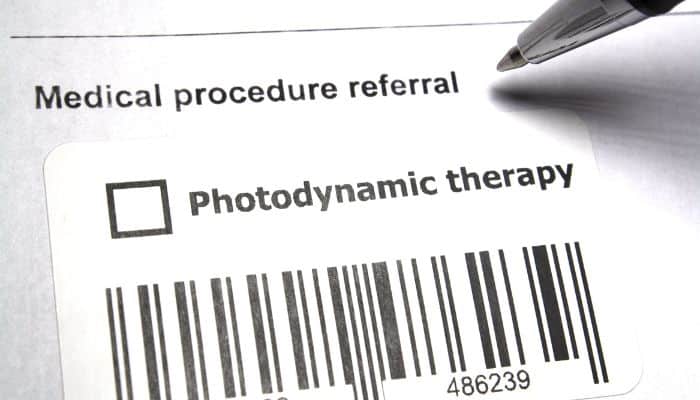What You Should and Shouldn’t Eat Before Photodynamic Therapy
Photodynamic therapy (PDT) uses light and a photosensitizing drug to kill cancerous or pre-cancerous cells. It’s a standard phototherapy used to treat several cancers, age-related macular degeneration, acne and psoriasis. Doctors sometimes treat bacteria and fungal infections with it, too.
Naturally, those undergoing PDT may be nervous about the procedure — but knowing how to prepare for PDT can make a world of difference. This includes what you should and shouldn’t eat beforehand.
How Does Photodynamic Therapy Work?
Typically, doctors treat a specific part of the body with PDT. A photosensitizing agent is activated by light from a laser or different LED source, forming an oxygen radical to eliminate harmful cells and blood flow to tumors.
Your doctor will give you the agent orally, topically or intravenously one or two days before PDT. On the day of the procedure, they will direct the light onto the skin cancer or tumor. Altogether, the process lasts about 15-90 minutes.
If you have throat or lung cancer, you will be given an endoscope so your doctor can see the inside of your body. Esopheogal tumors respond well to PDT. According to one study, patients showed an 87% improvement after six months.
How to Prepare for PDT
Preparation is critical for successful PDT treatments. Most specialists recommend not eating four to six hours before PDT. However, you can drink water for up to two hours prior. Your doctor will tell you if you can take your regularly prescribed medications.
You should refrain from shaving or applying lotions to the localized area that morning. Depending on the weather, wear appropriate clothing or bring a wide-brimmed hat to block sunlight from affecting the treated skin.
Of course, eating a healthy diet before the procedure is crucial. Knowing what to eat and avoid before PDT will help reduce skin sensitivity and promote healing.
5 Foods You Should Eat Before PDT
Food is medicine, delivering essential nutrients and minerals for skin protection and healing before and after PDT. For the best results, eat these six foods before your procedure.
Salmon
Salmon is one of the most vital sources of omega-3 fatty acids. Omega-3s have anti-inflammatory compounds to reduce swelling and redness.
Inflammation is common after PDT. Your body works overtime to fight infections or anything else entering your system. Eating salmon leading up to your procedure will provide the nourishing antioxidants for less of an inflammatory response.
Eggs
Eggs are an excellent source of protein and choline. Choline stimulates cell repair and regeneration, along with reducing inflammation. Likewise, eggs give your body a healthy dose of vitamin D. One study suggests eating seven eggs weekly helps recirculate vitamin D, essential for protecting your skin.
Bananas
Everyone knows bananas are the go-to food for potassium. If not part of your diet already, they can improve muscle function for PDT recovery — especially in men.
Bananas also contain vitamin C, which helps boost your immune system. Doctors will recommend not using aggressive topical serums following PDT — so bananas can supplement vitamin C instead.
Berries
As a superfood, berries of all kinds are ideal for skin health. Their antioxidative properties protect your skin while ensuring you receive vitamin C and fiber.
A bowl of berries in the mornings leading up to your PDT treatment will help keep inflammation down. Likewise, several studies have uncovered ways berries can prevent DNA damage and potentially protect your body from malignant cancers.
Oatmeal
Nourish your body with vitamin E, which effectively protects against ultraviolet skin damage, reduces inflammation and promotes wound healing.
Studies show consuming vitamin E may not have the same effects as topical applications. However, your doctor can recommend when to supplement with vitamin E and C serums for a more significant photoprotective impact.
5 Foods to Avoid Before PDT
PDT can be an uncomfortable experience for some people. The following foods may exacerbate their discomfort or make the treatment ineffective.
Grapefruit
Grapefruit tends to interact negatively with different medicines. Therefore, it’s best to eliminate it from your diet at least a week before and after PDT.
According to the U.S. Food and Drug Administration, grapefruit may allow more of the photosensitizing agent into your bloodstream. This can put you at risk of having worsening side effects, such as a burning sensation, pain and swelling, stomach ache and difficulty swallowing.
Coffee
Past research suggests coffee can dehydrate you. While recent studies have countered those presumptions, coffee is still a diuretic — meaning you will urinate more often. If dehydrated, your body may become more inflamed with muscle aches. Drink water instead to improve your renal function and reduce swelling.
Alcohol
Traditional PDT is uncomfortable for many patients. Although PDT improvements have minimized pain and reduced the procedure’s duration, not everyone receives it.
Drinking alcohol before your PDT procedure may increase discomfort. It can also cause sun sensitivity by triggering itching and redness when exposed to sunlight. Like coffee, avoid drinking alcohol for some time before your procedure.
Sugary and Fatty Foods
A Western diet rich in sugary and fatty foods can induce skin inflammation, such as psoriasis. In one study, mice were given a similar diet to the Western diet for four weeks, resulting in swollen ears and dermatitis.
Instead, another study discovered vegan diets promoted faster skin recovery and reduced side effects following PDT treatment.
Red and Orange Foods
PDT may cause skin redness. As such, you should avoid eating red and orange foods at least one day before and after.
Orange-pigmented foods — carrots, butternut squash, orange bell peppers and others — contain beta-carotene. For some people, beta-carotene may cause temporary skin discoloration.
Prepare for PDT With the Right Foods
You can improve your PDT experience by eating the right foods and avoiding those known for worsening symptoms. A healthy diet with essential nutrients will speed your recovery and lessen skin damage.



Comments are closed.